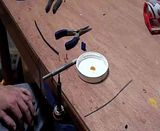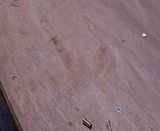|
|
Post by iflyforfun on Oct 5, 2010 15:58:20 GMT 1
I thought it would be better to post both videos of how I solder and then adjust the tension of the EC3 plugs. This is how I solder my EC3 plugs.  This is how I adjust the tension of the EC3. This makes it much easer to connect and disconnect. Be very carefull as to not make them too loose.  Thanks for watching!! Ifly |
|
jd
Flying officer

Posts: 23
|
Post by jd on Nov 24, 2011 2:09:56 GMT 1
Great tip, and works like a charm, Thanks!
|
|
|
|
Post by coupe1942 on Sept 6, 2013 23:08:41 GMT 1
Older thread, but new to me. Man, I sure enjoyed watching this video and learning from it. Great tips.
|
|
|
|
Post by spindeepster on Sept 6, 2013 23:42:28 GMT 1
Wow coupe1942...thanks for bringing this post to the top!
|
|
|
|
Post by hghost on Jul 8, 2014 5:19:20 GMT 1
This is worth bringing up again, as soldering is not a pleasant thing for some of us
in fact I hate soldering period...never do seem to get a good bond...they work but always worry about them.
|
|
|
|
Post by sham on Jul 8, 2014 19:10:41 GMT 1
I can solder, but I prefer not to.
So I buy batteries from places that will fit the EC3 connectors my planes use for me. Then I bought a deans to EC3 adapter for the charger.
Shhhh, its a secret.
|
|
|
|
Post by hghost on Jul 8, 2014 20:00:15 GMT 1
I can solder, but I prefer not to. So I buy batteries from places that will fit the EC3 connectors my planes use for me. Then I bought a deans to EC3 adapter for the charger. Shhhh, its a secret. LOL, nothing wrong with that.  I have a couple of these monster 19 in 1 charge adapters I use to charge my batteries. As I have so many different ends for so many planes and Heli's, instead of soldering all one end ( like many do ) I simply bought the adapter that has ALL the ends on them already and charge my batteries that way . www.amazon.com/Colossus-RC-Charging-Adapter-including/dp/B00E001DFC |
|
|
|
Post by sham on Jul 8, 2014 20:18:20 GMT 1
Those adapters are awesome! I think I would buy individual adapters for the aircraft and use all the same batteries. But whatever is easier, really.. And those charger adapters you have certainly solve the problem  |
|
|
|
Post by flydiver on Jul 8, 2014 20:56:21 GMT 1
When you get into this sport you think it's to learn to fly. Sure, that happens.
What you really learn is way more about electronics, batteries, tape, glue, and repair than you ever expected.
Soldering is like flying. It takes directed practice. In RC it's almost a requirement to learn and well worth the effort. When I started I was lousy. Now I've replaced capacitors on motherboards, LCD screens, fridge circuit boards, and a host of other applications. It's very worthwhile learning.
|
|
|
|
Post by hghost on Jul 8, 2014 23:09:19 GMT 1
When you get into this sport you think it's to learn to fly. Sure, that happens. What you really learn is way more about electronics, batteries, tape, glue, and repair than you ever expected. Soldering is like flying. It takes directed practice. In RC it's almost a requirement to learn and well worth the effort. When I started I was lousy. Now I've replaced capacitors on motherboards, LCD screens, fridge circuit boards, and a host of other applications. It's very worthwhile learning. You said it for sure. I still will do many things to get around soldering ( I dislike it that much ) But repairing is an absolute must. And as I am learning more about this technology and my experimenting with it, I know I have to solder more, and like everything else, practice makes perfect. I am still lousy at it, ( more of a Gob then a joint....lol )  But I also have watched more video's and see easier ways to do it and much more gentle and smoother connections by doing so...still rougher than it should be. |
|
|
|
Post by flydiver on Jul 9, 2014 2:55:20 GMT 1
I use a different technique that most. Generally I have the soldering iron on a small stand that I prop it up on and make it secure. Then I bring the 'work' to the iron rather than the iron to the work. For me I can control the items better than the iron.
That doesn't work for some stuff (motherboard and the like) and I have to do it the standard way.
A lot of it is the right iron, good prep and good flux. If you get 'gobs' you are too cold, not clean enough, and not fluxing properly. A well prepared item to be soldered will simply suck up the solder.
|
|
|
|
Post by hghost on Jul 9, 2014 5:03:29 GMT 1
Yeah the video's have been a great help showing me the mistakes I was making
your right about the " to cold " .
Some things can't be rushed, one issue I have . " Little patience " .
|
|
|
|
Post by Knackered Sailor on Jul 9, 2014 11:29:40 GMT 1
Oh Blimey, I wish I'd known this was on the site just three days ago! So easy to get perfection. I got a 2200 turnigy battery (I mentioned it last week) but it doesn't come with EC3 conns so I had to solder some on and not brilliantly. Thanks iflyforfun I've got it for next time.
|
|